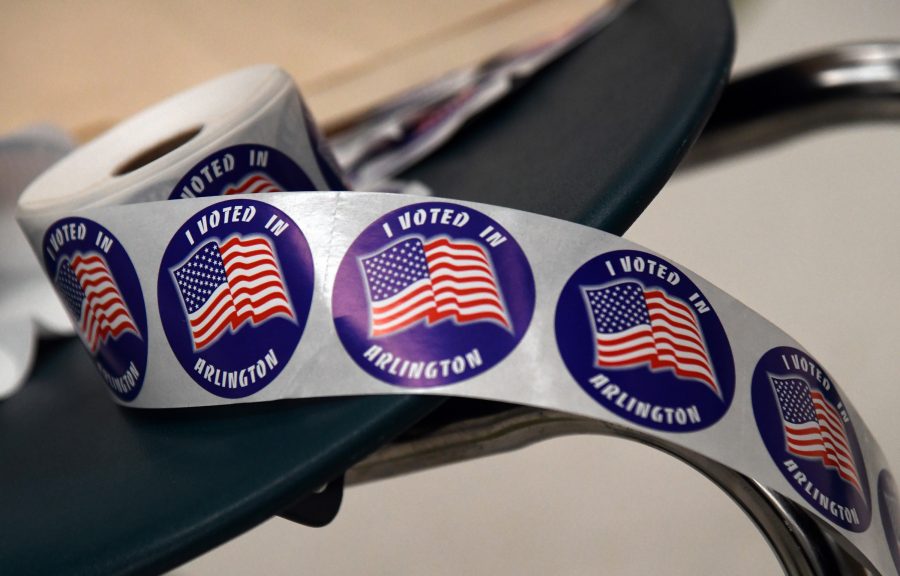Given today’s climate, election reform is necessary
More parties should be created to represent people across the broadening political spectrum
September 22, 2021
If the past five years have taught the American people anything, it is that politics and elections are messy. They are divisive, frustrating, and often don’t elicit results the public finds satisfying. For that reason, drastic reform needs to be taken to restore the public’s trust and belief in the election process — voting procedures and the two-party system must be addressed to improve the elections.
Now more than ever, in a divided political climate, the two-party system does not represent the public’s vast spectrum of political opinions. Since the 2016 election (and likely before then, too) the political spectrum has broadened. People at either end of the spectrum have become more politically active and, as a result, have affected their respective parties’ agendas. This broadening political activity from far-right and far-left organizations necessitates the creation of additional parties because the consensus over one unified candidate per party has become incredibly murky.
Take, for example, the 2016 election.
With only two parties, Donald Trump and Hillary Clinton became the nominees for their respective parties. Yet, both primaries were heavily contested, and a decent percentage of the party would most likely have rather seen another candidate representing their party in the general election. Donald Trump won the Republican primary with 44.9 % of the vote. For the Democrats, Clinton won with 55.2%. Neither number is very convincing.
In 2019, Gallup Polls found that 37% of Americans identify as conservatives, 24% as liberals and 35% as moderates. With that in mind, how are the moderates expected to vote, especially when considering that candidates on either side often don’t represent their inclinations? To ensure that the election process reflects the will of the people, more parties should be enacted to represent where people stand on the political spectrum.
Now more than ever, with increasing amounts of people identifying as moderates, there should be a four-party system. This could consist of the traditional Republicans and Democrats, along with a center-left and center-right party. In the 2016 election, this would have seen President Trump, Clinton, Bernie Sanders and possibly Jeb Bush or John Kasich as presidential nominees. Those candidates, all contending in a general election, would have far better reflected the changing tides of American politics and the growing spectrum of public opinion.
To give each candidate and party a more fair chance of winning the election, voting itself must also change.
The state of Maine utilizes a ranked-choice voting system in its elections, and the United States should use this as well. Especially if the two-party system were to remain in place, a ranked-choice system would allow voters to vote for another candidate as their second choice, such as an Independent or more moderate candidate. This would allow voters to vote for a third-party candidate without the fear that their vote would be insignificant — they would be able to rank other candidates, as well.
A common qualm with the current general election system is that, often, the winner does not even secure over 50% of the popular vote. In 2016, neither Trump nor Clinton hit that number. In battleground states, this is evident as well. Take Wisconsin, for example, a state Trump won despite securing only 47% of the vote.
In a ranked-choice voting system, as seen with the system implemented in Maine, over 50% of the vote would be required for a candidate to win the election. In this system, if the leading candidate does not reach 50%, the last-place finisher is removed, and the second-place votes from that candidate are applied to the other candidates. That process repeats until a candidate eclipses the 50% mark. This system works well because it ensures that, at the end of the day, at least over half of the voters cast a ballot for the winning candidate.
Establishing ranked-choice voting and more parties would also mean that the Electoral College would need to be removed or adjusted, as a victory in the Electoral College would now be unconvincing.
It would also highlight a problem that already exists: candidates must only target a few key states to win the general election. A popular vote could fix this because, instead of just having to win a state, the candidate would be vying for each individual vote, and those votes would all hold equal value.
Likely, none of these changes will ever occur, but they could help. It is our American standard that equality should exist for all, so why don’t our elections reflect this sentiment? Adjustments could ensure that equality is more prevalent for the citizens, the candidates and our country — and why shouldn’t we try?














Brian Stephenson • Sep 23, 2021 at 10:52 am
“…at the end of the day, at least over half of the voters cast a ballot for the winning candidate.” Not quite. 50+% of the vote from the final round is necessary to win. This can easily be less than 50% of all votes cast. Current best example of an Ranked Choice voting (RCV) winner having less than 50% is the NYC Dem primary, in which Adams won with 43%.
“…a ranked-choice system would allow voters to vote for another candidate as their second choice, such as an Independent or more moderate candidate.” True, but if you rank a D/R above an independent/3rd party candidate, the ‘other’ will most likely never see your support.
This video (https://www.youtube.com/watch?v=FeMg30rec58) walks the viewer through an RCV election and points out many of the issues with that voting method.
Don’t get me wrong, RCV is* a step in the right direction, but it is a minor step. Cardinal methods (rated/scored, rather than ranked) are the way to go. Approval voting (vote for all you approve of, most votes wins), Score voting (score each candidate, highest score wins), and STAR voting (Score Then Automatic Runoff) would all do more to improve our electoral process than using RCV.